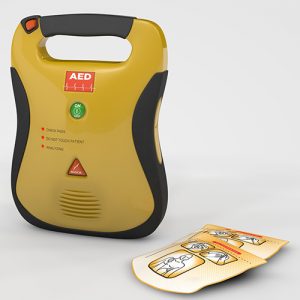
Is your medical monitoring device design optimized to save more lives?
While human-machine interfaces and control panels on all types of equipment should be designed to keep users and operators safe, when it comes to medical monitoring devices, safe and accurate operation can literally mean life or death.
For example, while infusion pumps can deliver intravenous fluids in a precise manner to help enhance safety and consistency, they can also cause patients great harm. More than 56,000 adverse drug events took place between 2005 and 2009, and device malfunctions alone weren’t to blame — some of these adverse events were due to confusing user interfaces. Intuitive medical device design has the potential to prevent harmful and even fatal incidents due to improper operation.
 That’s why many medical devices are regulated by the FDA. Looking beyond what’s required for FDA approval, there are several ways manufacturers and designers can improve product design, and ultimately patient and consumer safety for a range of device types, including:
That’s why many medical devices are regulated by the FDA. Looking beyond what’s required for FDA approval, there are several ways manufacturers and designers can improve product design, and ultimately patient and consumer safety for a range of device types, including:
- Blood chemistry analyzers
- Diagnostic equipment
- Infusion pumps and drug delivery devices
- Patient monitoring devices
- Pulse oximeters
- Heart rate monitors
- Heater-cooler devices
- Consumer wearables
New, more innovative products are being developed all the time, including those for early detection of diseases. As the medical device industry continues to evolve and become more innovative, it’s important to keep the basics of good monitoring device product design in mind:
Choose clarity over design aesthetic
There will always be newer, more advanced equipment to buy, but hospital administrators and medical professionals need to carefully weigh the costs and benefits when choosing medical monitoring devices.
Do you really need the Apple Watch of blood chemistry analyzers, or is a simple control panel with capacitive touch indication best option for the task at hand? Form should always follow function, but when the function is to monitor potentially life-threatening conditions, design should err on the side of clear, accurate operation. How can this be achieved?
- Use separate indicators for key warnings or alarms instead of having them all located in one interface which could be overwhelming to understand and cause delays in reaction times.
- If grouping several indicators in one control panel, consider adding a separate indicator on the side of the machine that can be seen from across the room for the “code red” alarming.
- Where appropriate, replace text readings with numerals or even icons to speed up the pace of visual communication.
Factor in blood, sweat and tears
There’s just no preventing medical monitoring devices from coming into contact with a host of fluids during operation. That means the equipment must be designed to withstand moisture as well as whatever is being thrown at it without missing a beat (or reading).
With the constant concern of patients contracting hospital-acquired infections, equipment must also be able to withstand potent disinfectants. As touch-free designs are becoming more popular in an attempt to prevent these harmful infections, they should still take moisture-resistance into consideration.
Think outside the facility
From pulse oximetry where LEDs are used to measure oxygen levels in the blood to automated external defibrillators (AEDs) that are used by non-medical personnel to treat someone under cardiac arrest, the point of care extends well beyond a stable (and hopefully sterile) examination or hospital room. Therefore, portability must be incorporated, which could impact everything from daytime / nighttime visibility requirements to extended viewing angles.
Rise of wearables and other self-monitoring devices
Advancing technology is making it more convenient than ever for consumers to self-monitor a range of health indicators — from heart rate and caloric intake to sleep patterns and insulin levels. And with seven out of 10 Americans tracking at least one health indicator, this trend is sure to enhance health for the better — but only if they use the devices properly and understand how to interpret the data.
Wearables aren’t the only self-monitoring devices on the market, and more and more products are being introduced to provide a preventative approach to combatting diseases like diabetes.
From self-monitoring consumer wearables to point-of-care solutions that can save lives, thoughtful visual communications should always be part of the design process. To learn more about how proper interface design and visual communication can help maximize safety and accuracy in medical monitoring devices, contact the VCC team today.


